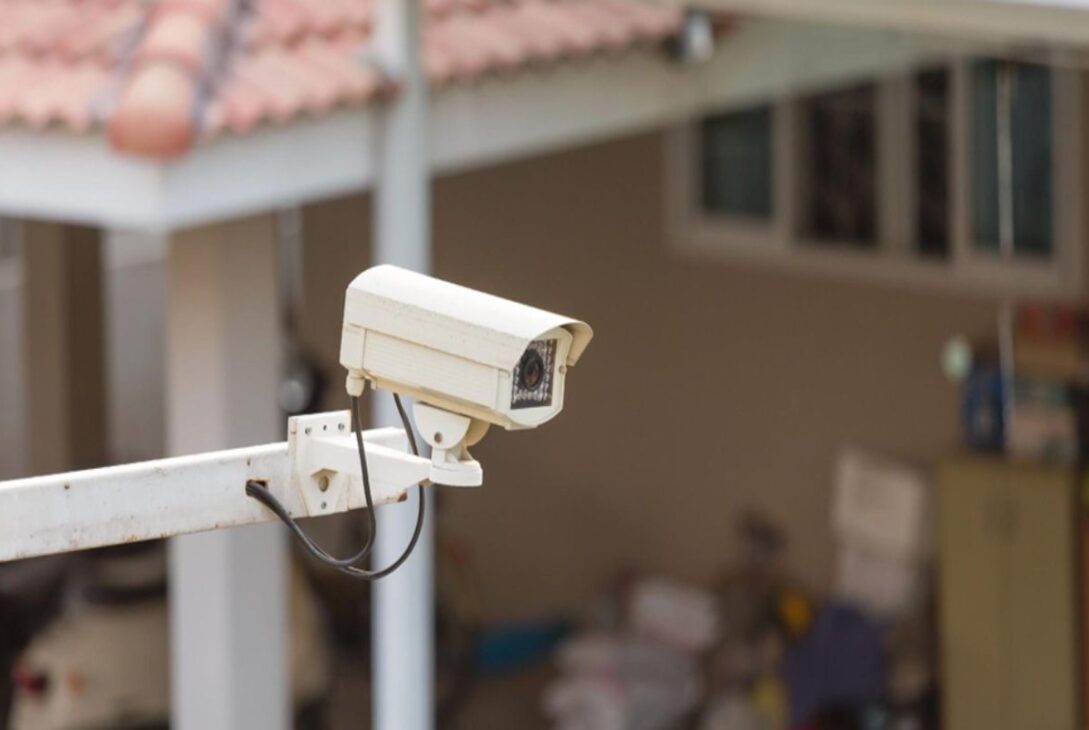HD surveillance cameras are transforming residential safety by providing clearer, more detailed video footage, which enhances security monitoring. With high-definition resolution, these cameras capture sharp images, making it easier to identify intruders, assess potential threats, and gather evidence when necessary.
Modern systems, especially those supported by AI technologies like ai gun detection, are even capable of identifying critical threats in real time. Companies such as Coram, known for their advanced AI-driven security innovations, integrate these capabilities into residential and commercial surveillance to improve situational awareness and response.
Advanced features, such as motion detection, night vision, and remote access, further improve their effectiveness, ensuring homeowners have real-time control and insight into their property’s security.
As home security becomes increasingly important, HD surveillance cameras offer an essential tool for protecting families and belongings, providing peace of mind and deterring criminal activity.
The Technology Revolution in Home Security
As technology continues to advance, home security systems are becoming more sophisticated and effective. The integration of smart devices, HD cameras, and automated features is revolutionizing the way we protect our homes.
Real-Time Monitoring Capabilities
Live video monitoring has transformed from a luxury reserved for high-end commercial properties to an accessible feature for everyday homeowners. You can now watch your property in real-time from anywhere in the world, whether you’re at work, on vacation, or just curious about package delivery. This immediate access provides an unprecedented level of control over your home’s security.
The streaming quality has improved dramatically, with many hd surveillance cameras offering 4K resolution that rivals professional broadcasting equipment. Night vision capabilities ensure that darkness doesn’t create blind spots, while motion detection algorithms can distinguish between a family pet and a potential intruder.
Smart Detection Features
Modern surveillance systems go beyond basic recording to include intelligent analysis. These cameras can detect unusual activity patterns, recognize familiar faces, and even identify specific objects or behaviors that might indicate trouble. Some systems learn your family’s routines and can alert you when something seems out of place.
The integration with artificial intelligence means these systems are constantly improving their accuracy and reducing false alarms. This smart functionality represents a significant leap forward from traditional security cameras that simply capture everything without any filtering or analysis.
Wireless Innovation and Installation Benefits
Wireless security systems simplify installation by eliminating wires, offering flexible device placement, and enabling remote monitoring, enhancing convenience and providing homeowners with optimal coverage and peace of mind.
Simplified Setup Process
Wireless cameras have revolutionized how homeowners approach security installations. Gone are the days of running cables through walls or hiring contractors for complex wiring projects. Modern wireless systems can be installed in a matter of hours, often by the homeowners themselves.
The flexibility of wireless technology means you can easily relocate cameras as your needs change. If you decide to monitor a different area of your property, you simply move the camera rather than rewiring your entire system. This adaptability is particularly valuable for renters or homeowners who like to adjust their security setup seasonally.
Power and Connectivity Solutions
Battery technology has advanced to the point where many wireless cameras can operate for months without needing a charge. Solar panel accessories extend this even further, creating completely self-sufficient monitoring points around your property.
Security camera installation has become more accessible than ever, with many systems designed specifically for do-it-yourself setup. Step-by-step mobile apps guide you through the process, and most systems are operational within an hour of unboxing.
Impact on Residential Safety Patterns
Wireless security systems have significantly improved residential safety by providing real-time monitoring, quick alerts, and flexible placement. These systems help deter crime and ensure faster response times, enhancing overall security.
Deterrence Through Visibility
The psychological impact of visible cameras cannot be overstated. Potential intruders know that modern residential cameras capture high-quality footage that can be used for identification and prosecution. This knowledge alone prevents many crimes from occurring in the first place.
Studies consistently show that homes with visible security cameras are significantly less likely to be targeted by burglars. The risk-reward calculation changes dramatically when criminals know their actions are being recorded in high definition.
Evidence Collection and Legal Support
When incidents do occur, the evidence quality from modern HD cameras often provides law enforcement with exactly what they need for quick resolution. Clear footage can identify suspects, document property damage, and provide timestamps that help establish sequences of events.
This evidence quality also proves invaluable for insurance claims, providing clear documentation of what occurred and when. Many insurance companies now offer discounts for homes with comprehensive surveillance systems, recognizing their value in preventing and documenting claims.
Commercial-Grade Features for Residential Use
Commercial-grade security features, such as HD cameras, motion detection, and remote monitoring, provide residential properties with advanced protection, offering enhanced safety and control for homeowners.
Professional Monitoring Services
Best security cameras for businesses have traditionally offered features that residential systems couldn’t match. However, this gap is closing rapidly as home security cameras adopt professional-grade capabilities like 24/7 monitoring services, automated alert systems, and integration with local law enforcement.
Many residential systems now offer professional monitoring services where trained operators watch your cameras and can respond to incidents immediately. This bridges the gap between basic home security and the comprehensive protection typically reserved for commercial properties.
Advanced Analytics and Reporting
Modern residential systems provide detailed analytics about activity patterns around your property. You can track when deliveries arrive, monitor who comes and goes, and even receive reports about unusual activity during specific periods.
These analytics help homeowners understand their property’s security patterns and identify potential vulnerabilities. The data collected can inform decisions about additional security measures or adjustments to existing systems.
Future Trends and Emerging Technologies
Future trends in home security include AI-powered cameras, facial recognition, smart home integration, and advanced analytics. These technologies promise enhanced automation, improved accuracy, and greater convenience for homeowners.
Integration with Smart Home Ecosystems
The future of residential surveillance lies in seamless integration with comprehensive smart home systems. Cameras will increasingly work alongside smart locks, lighting systems, and environmental controls to create holistic security environments.
Voice control integration means you can check camera feeds, adjust settings, and receive verbal status updates without touching a device. This hands-free operation is particularly valuable during emergencies or when your hands are full.
Artificial Intelligence and Predictive Analysis
Next-generation systems will use AI to predict potential security threats before they materialize. By analyzing patterns in foot traffic, vehicle movement, and other environmental factors, these systems may be able to alert homeowners to unusual activity before it becomes problematic.
Machine learning algorithms will continue improving their ability to distinguish between normal and suspicious behavior, reducing false alarms while ensuring that genuine threats are never missed.
Residential Security Comparison
| Feature | Traditional Systems | Modern HD Cameras | Future Systems |
| Video Quality | 480p standard | 4K+ resolution | 8K with AI enhancement |
| Installation | Professional required | DIY-friendly | Plug-and-play |
| Monitoring | Local recording only | Real-time streaming | Predictive alerts |
| Storage | Physical tapes/DVDs | Cloud-based | AI-filtered storage |
| Cost | High upfront, low ongoing | Moderate setup, subscription | Decreasing with scale |
The Bottom Line on Modern Home Security
HD surveillance cameras have fundamentally altered the landscape of residential safety, offering homeowners unprecedented control over their property’s security. The combination of crystal-clear video quality, wireless convenience, and intelligent monitoring capabilities creates a security ecosystem that was unimaginable just a decade ago.
The technology continues evolving rapidly, with AI-powered features and smart home integration pointing toward even more sophisticated residential security solutions. Perhaps most importantly, these systems have proven their effectiveness in both preventing crimes and providing crucial evidence when incidents occur, making them an increasingly essential component of modern home protection.
FAQs on HD Surveillance Cameras
- Do burglars avoid houses with cameras?
Many studies have shown that burglars who see homes with security cameras are less likely to choose those homes to burgle, so having hidden cameras defeats this purpose. Keep your outdoor cameras visible so that they can prevent crime.
- Will surveillance cameras and technology make our society safer?
Public Security Cameras Improve Public Safety. When we install a home security camera, we gain increased house safety. Just like that, the main benefit of surveillance cameras in public spaces is also the increase in public safety.
- How long do wireless security cameras last?
Battery-powered wireless cameras typically last 2-6 months per charge, depending on usage and settings. Solar-powered options can operate indefinitely with adequate sunlight exposure.



